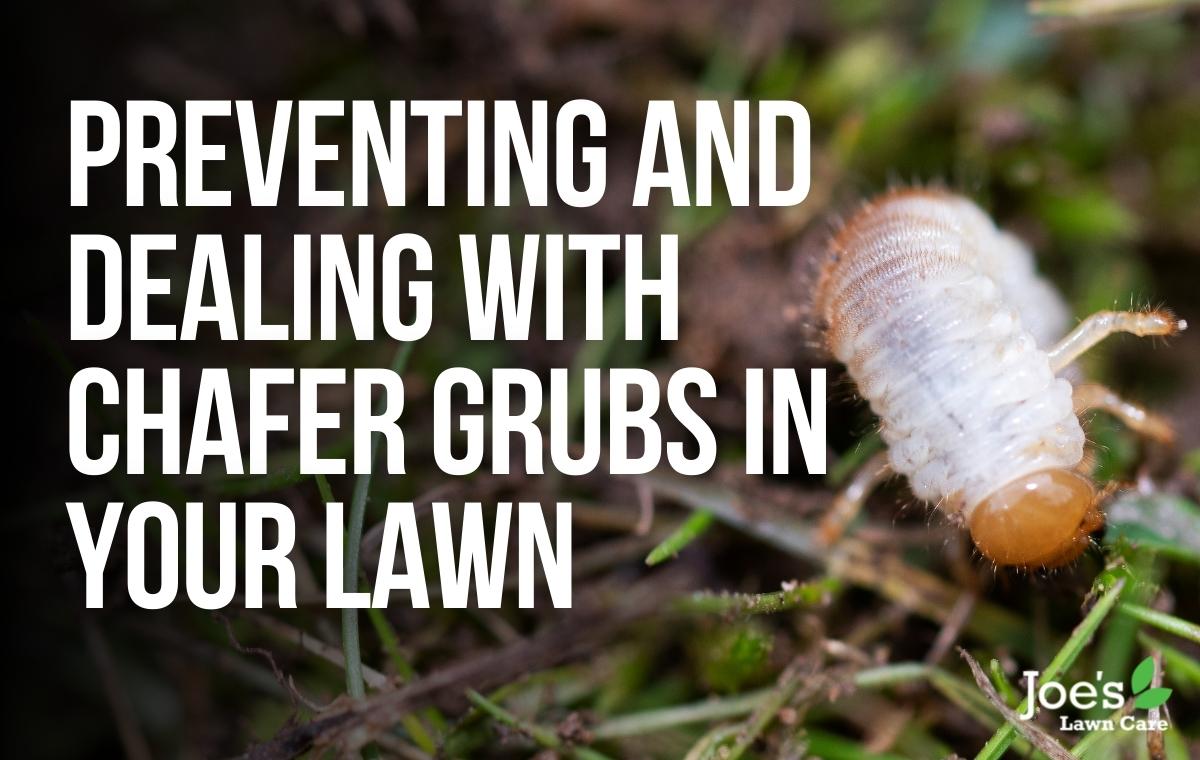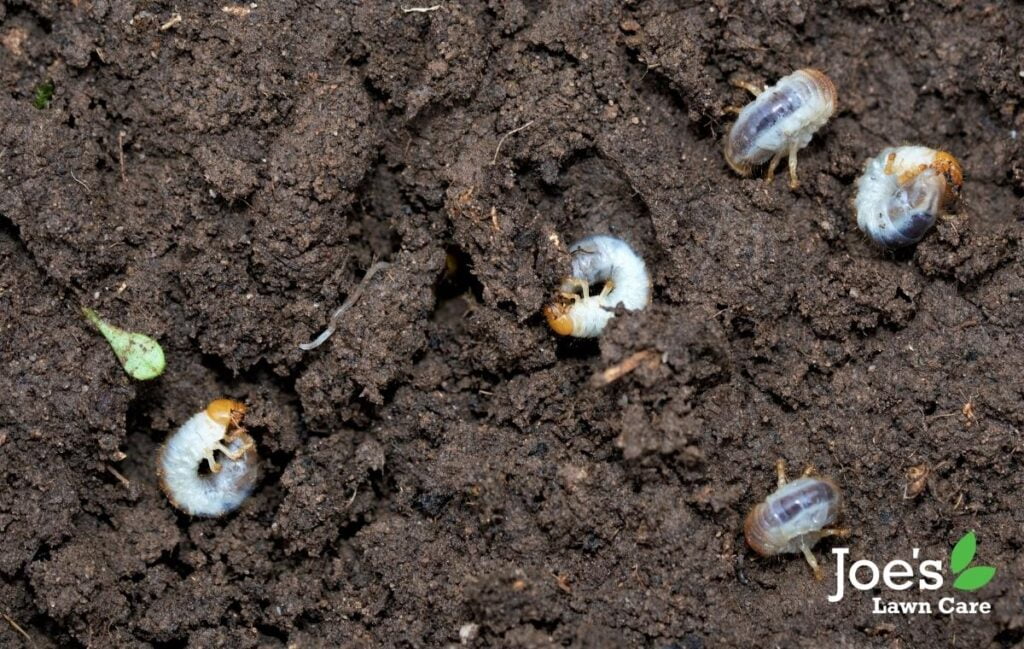Preventing And Dealing With Chafer Grubs
You might want to sit down for this one because, umm, errrr, you know that dreamy-looking lawn you’ve devoted metaphorical blood and literal sweat to?! Well, it can be easily turned into something that looks more like it was ploughed by a drunken sailor thanks to a thing called chafer grubs. Yepp. Chafer grubs. That’s the bad news.
The good news is: there is a way to prevent and deal with these short, stumpy, white, C-shaped beetle larvae that love destroying lawns. All you need to do is read on to Prevent And Deal With Chafer Grubs in Your Lawn:
What Exactly Are These Chafer Grubs?
In a word: nasty. But for anyone after a bit more detail than that, chafer grubs are the soft-bodied larvae of chafer beetles that live in your soil. They feed on your lawn’s grassroots (and other organic matter), to the point where they can actually cause areas of your lawn to die. Like we said, they’re nasty.
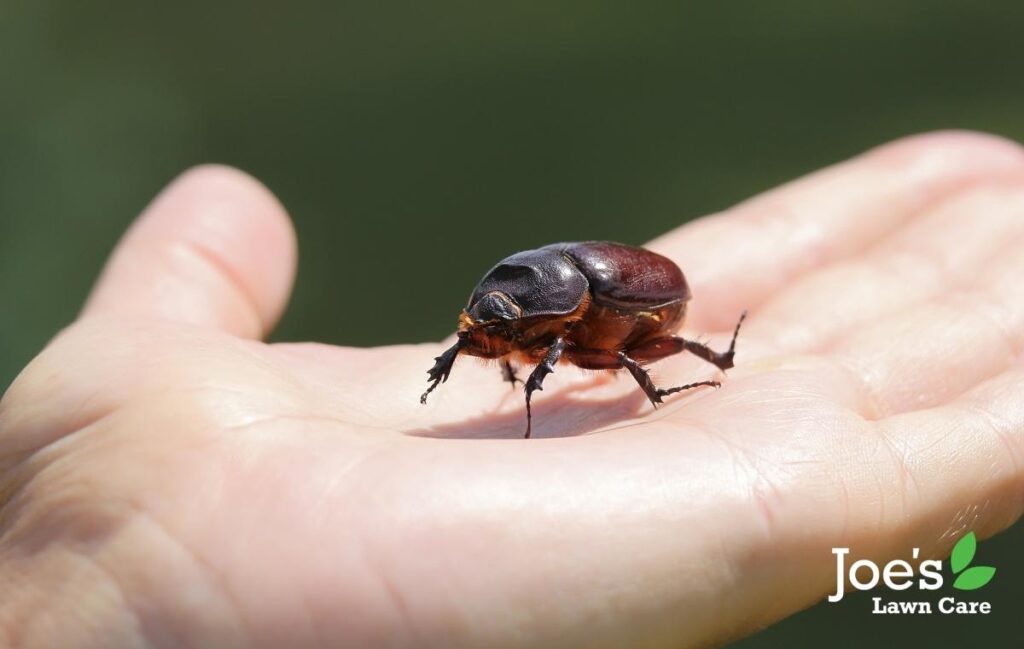
How To Know If You Have A Chafer Grub Problem
When it comes to chafer grubs, trust us, you’ll know if you have infestation in your lawn. That’s because these grubs tend to cause a serious amount of damage if undealt with.
First off, you’ll probably start to notice small-ish, irregular-ish patches of your lawn have either started to turn yellow-ish or they’ve turned brown to the extent your grass looks dry and wilted. In addition , you may find further damage has been caused by jays, magpies, rooks, crows, badgers and foxes. They tear up your grass in the hunt for some grubs to feed on. Whatever the case, both types of damage can wreak havoc on your lawn’s health.
The other sign of chafer grubs worth looking out for is loose turf. Basically, if you can pull your lawn away from the soil without much resistance. Then there’s a good chance that your root system has been eaten away by chafer grubs or leatherjackets (which also love chewing up turf).
Either way, start by cutting out some of your lawn and inspecting the soil to see if you can see any of these lawn pests. A few here and there is pretty normal, but more than dozen grubs per square foot is a pretty big red flag. What’s more, any presence of any chafer grubs could well be a sign that chafer beetles have been laying eggs in your lawn.
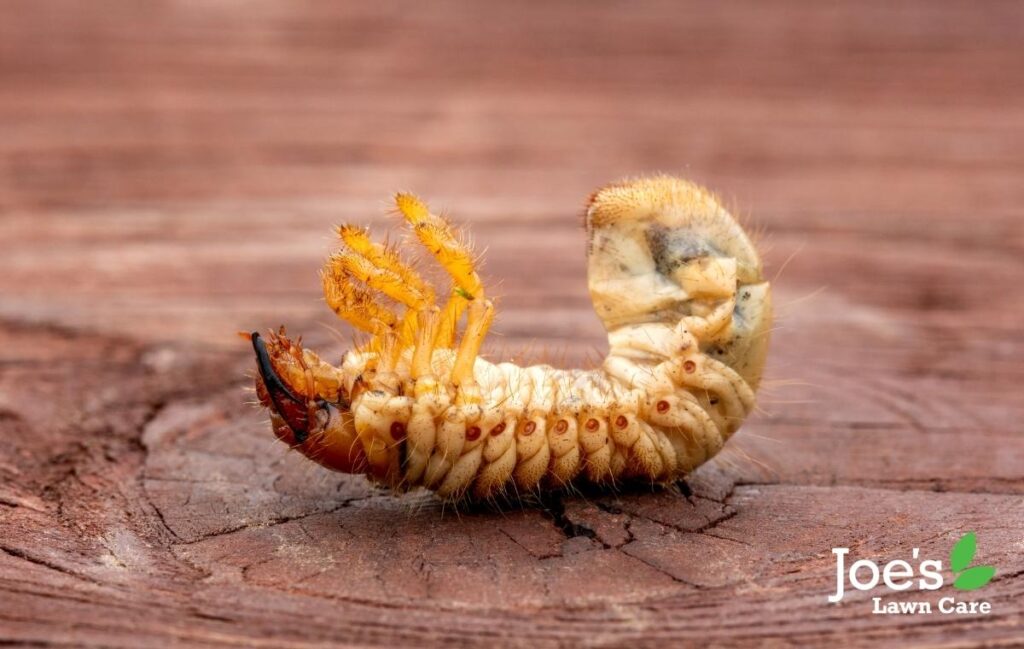
Getting Your Grub Problem Under Control
The best defence against almost every kind of lawn infestation – or common problems – is to grow the healthiest lawn you can. Paying special attention to feeding, watering and moss prevention, all of which have been known to help control grub populations. As such, the best thing you can do is keep your soil healthy.
Sometimes it is just unavoidable. They can end up in your lawn because they’re in your neighbours lawn, or birds can drop beetles into your garden. There are many different ways they can end up there.
Aside from that, your best move is to use biological control by investing in some pathogenic nematodes. These are natural enemies of chafer grubs. Attacking their larvae by infecting them with a lethal bacterial disease. The trick is to act fast, adding these microscopic creatures to the edges of any affected areas to stop them spreading. Of course, as with everything to do with lawns, success can rely heavily on timing. So get the most out of this preventive measure, make sure you apply your nematodes in the spring and autumn.
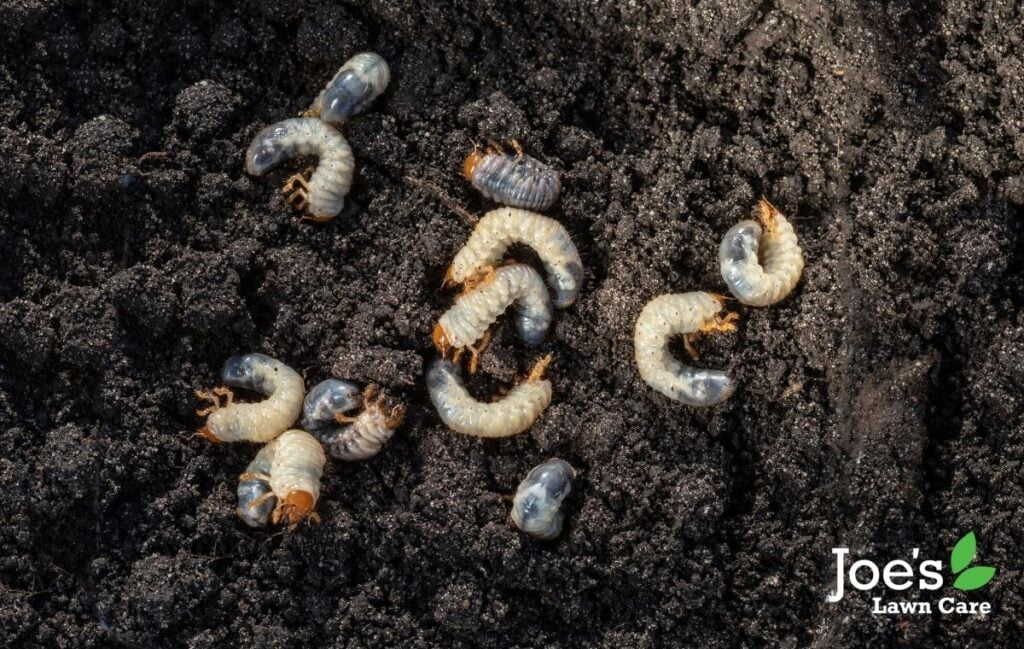
Preventing Chafer Grubs – Repairing Your Lawn After Finding Grub Damage
The major issue with chafer grubs is the way they attack your lawn’s root system. This means any affected areas of grass will grow from scratch. To do this effectively and efficiently, simply treat any chafer-hit areas like you would any other patch of bald grass in need of repairing, making sure you keep the fresh grass seed nice and moist so that it germinates successfully. Here’s how to:
- Rake and remove any loose or dead patches of your lawn
- Get the Joe’s Team to professionally aerate your lawn
- Begin reseeding any bare patches
- Start to keep on top of your watering duties so that your seeds are able to establish roots
- Yell the words, “I WIN, CHAFER GRUBS” at the top of your voice
Thanks for reading our guide on preventing and dealing with chafer grubs in your lawn. For more lawn care tips and tricks, follow us on Facebook and Instagram.





